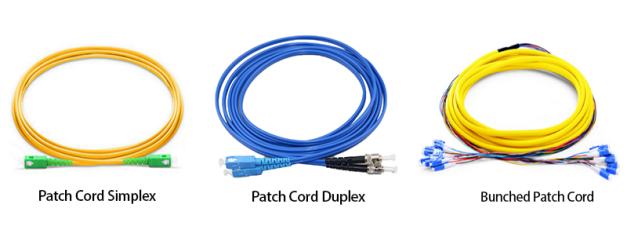FIBER BATCH CORD BUYING GUIDE
What is Fiber Patch Cord?
A fiber patch cord, also known as a fiber patch cable, fiber jumper, or fiber patch lead, is a fiber cable of a specific length terminated with fiber optic connectors at both ends. These connectors enable quick connections of fiber optic patch cords to optical switches, telecommunications networks, computer devices, or other fiber optic equipment. Fiber patch cords find extensive applications in data centers, fiber optic network communications, broadcasting, television, and other related fields.

Features of fiber patch cords

 Fiber patch cords are utilized in various applications, including:
Fiber patch cords are utilized in various applications, including:
- Cable television (CATV)
- Networking for computers
- Telecommunication networks
- Optical distribution frame (ODF) in optical transmission systems
- Networks requiring high-speed data transmission
- Networks necessitating high-quality graphic transmission
- Connecting optical transmission devices
The functions of fiber patch cords include:
1. Interconnecting Fiber Optical Equipment:
Fiber patch cords facilitate the connection of Fiber optical equipment featuring diverse fiber optical interfaces. This enables high-speed and reliable data transmission between various Fiber optical equipment through the utilization of Fiber patch cords.
2. Expanding Fiber Optic Networks:
Fiber patch cords are instrumental in connecting different network devices to extend the scope of fiber optic network telecommunications. For instance, they can link switches across different floors or routers between distinct data centers, enabling long-distance optical signal transmission and effectively broadening network coverage
3. Connecting with Optical Modules:
Fiber patch cords can also establish connections with optical modules. By utilizing patch cords to link optical modules with other fiber optic equipment, users can achieve enhanced speeds and longer distance optical signal transmission.
How to select a fiber patch cord:
1. Fiber Connector and End-face Type:
Fiber patch cords come with various connector types such as LC, SC, FC, ST, MTP/MPO, etc. Matching devices with the same interfaces can use patch cords like LC-LC or SC-SC. For devices with different interfaces, choose patch cords with different ends, like LC-SC or LC-FC. End-face types commonly include APC and UPC. APC types offer lower optical fiber loss and better performance compared to UPC types, making them preferable for applications sensitive to return loss like FTTX, PON, and WDM fiber optic equipment. However, APC types are typically more expensive, so choose between APC and UPC based on specific needs and budget.
2. Fiber Type Selection:
Different fiber types suit various data transmission distances. Single-mode patch cords are suitable for long-distance transmission, while multimode patch cords are ideal for shorter distances.
3. Choosing Simplex or Duplex Patch Cord:
Simplex patch cords feature a single fiber optic connector at each end, allowing data transfer in one direction. Duplex patch cords have two connectors at each end, enabling bidirectional data transmission. They are commonly used in duplex communication applications like fiber optic switches, servers, and modems. Select the appropriate type based on the interface of the connected fiber optic equipment.
4. Fiber Patch Cord Length and Outer Jacket:
Fiber patch cord lengths typically range from 0.5m to 100m. Choose the suitable length based on the distance between the devices requiring connection. Outer jackets are available in materials like PVC, LSZH, OFNP, and armored variants. PVC jackets are cost-effective and flexible, suitable for contained ventilation buildings. LSZH jackets produce minimal smoke and no halogen, ideal for structured cabling areas. OFNP jackets offer the highest fire rating, making them suitable for large indoor data centers. Choose the jacket material according to the application environment.
Check out AMP’s wide range of fiber patch cords with all specifications and product details
BUYING GUIDES
Fiber Patch Cords